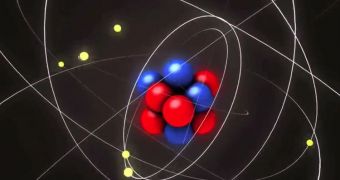US National Institute of Standards and Technology (NIST) physicists have recently determined that quantum computer will be able to simulate some of the most complex problems known today, including the collision of two particles. This will shed new light on the origins of the Universe.
Quantum computers are proposed devices whose components will make use of the amazing properties of quantum mechanics. Their switches will be able to exist in several configurations at the same time, which will enable these advanced electronics to consider all possible aspects of a problem.
At this point, scientists have only developed a theoretical model of the quantum computer, and they are using it to probe the nature of experiments that future devices of this type will enable. There are some studies that are off-limit even to the most advanced supercomputers we have today.
However, even the most basic quantum machines will display far greater performances. Scientists will use these computers to break extremely complex codes, enable ultra-secure communications, and conduct computationally intensive tasks, such as simulating particle collisions and supernova explosions.
“We have this theoretical model of the quantum computer, and one of the big questions is, what physical processes that occur in nature can that model represent efficiently?” NIST Applied and Computational Mathematics Division theorist, Stephen Jordan, explains.
“Maybe particle collisions, maybe the early Universe after the Big Bang? Can we use a quantum computer to simulate them and tell us what to expect?” he asks. Due to the fact that answering these questions involves the use of too many variables, supercomputers are quickly bogged down.
NIST investigators have already developed an algorithm that will enable any quantum computer – regardless of the technology used to build it – to conduct simulations of how particles collide. All possible interactions between the particles will be covered by this set of mathematical instructions.
At this point, this type of study cannot be conducted using computers. Physicists create large particle accelerators and impressive cameras, and then accelerate particles to high energy levels before colliding them head-on. The detector cameras then record the aftermath of these collisions.
When quantum computers are refined – a process that may require a few more decades – it will be possible to accurately simulate particle interactions without actually building new accelerators.
“What's nice about the simulation is that you can raise the complexity of the problem by increasing the energy of the particles and collisions, but the difficulty of solving the problem does not increase so fast that it becomes unmanageable. It means a quantum computer could handle it feasibly,” John Preskill adds.
The expert holds an appointment as the Richard P. Feynman professor of theoretical physics at the California Institute of Technology (Caltech), in Pasadena.

 14 DAY TRIAL //
14 DAY TRIAL //